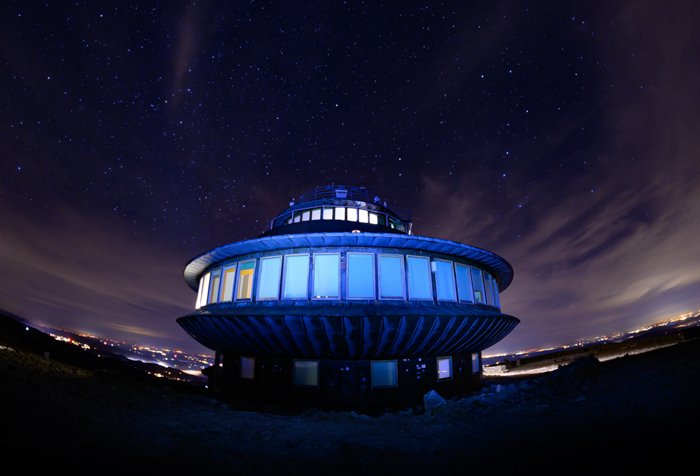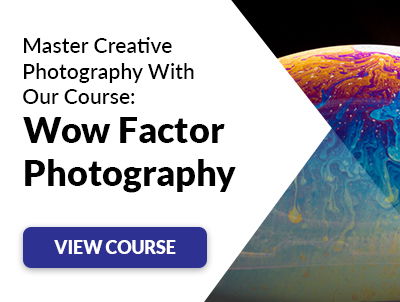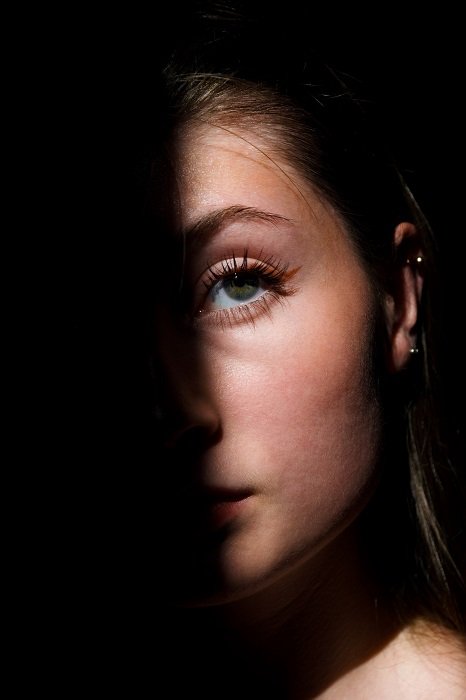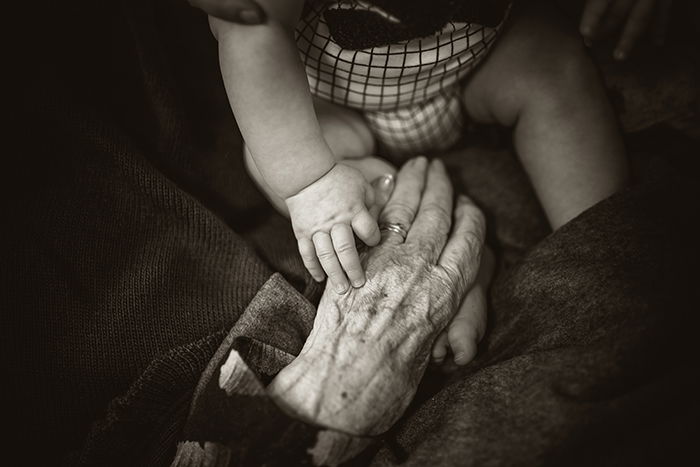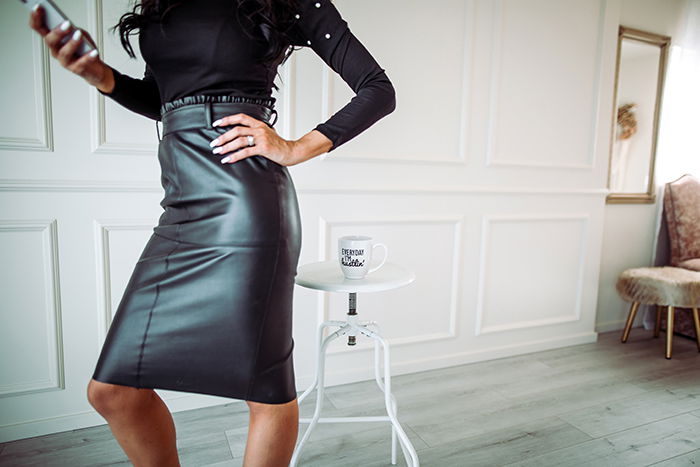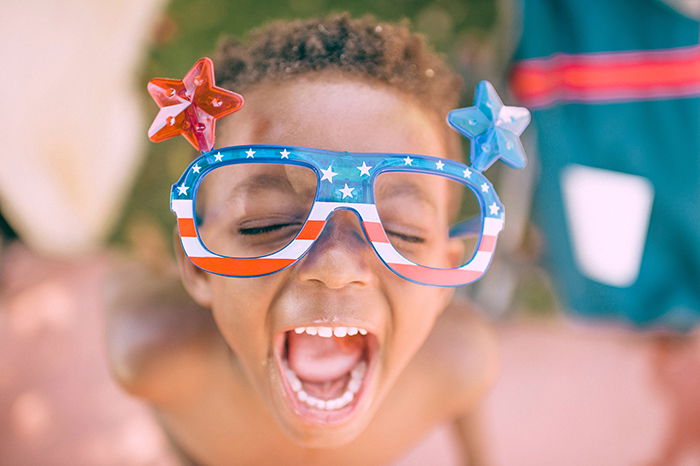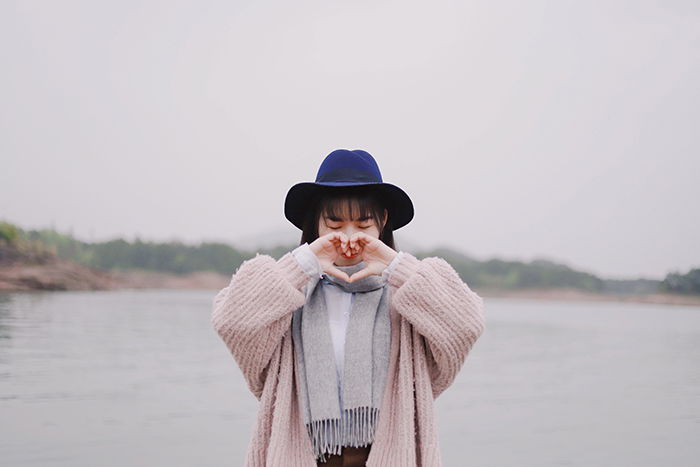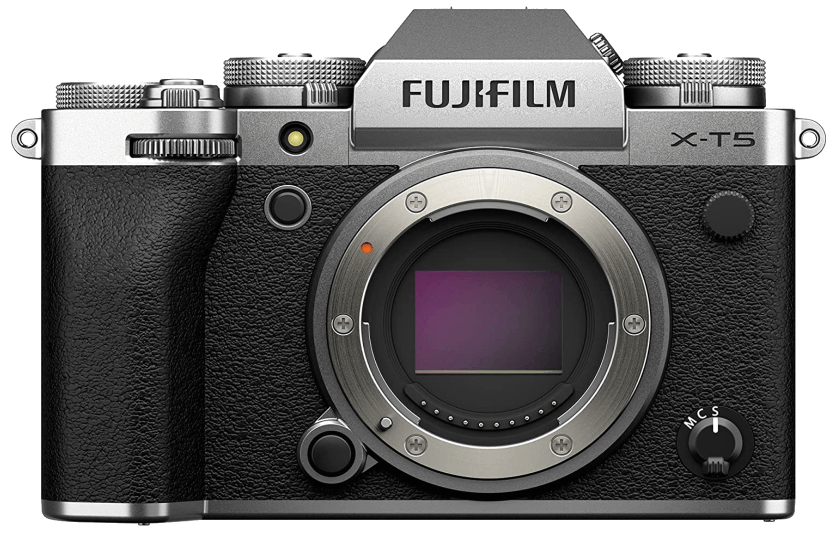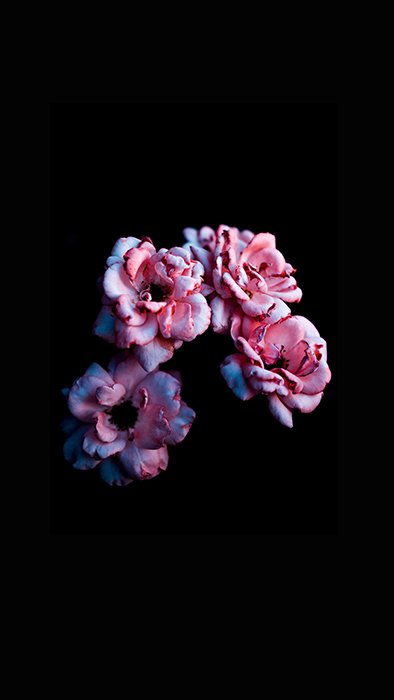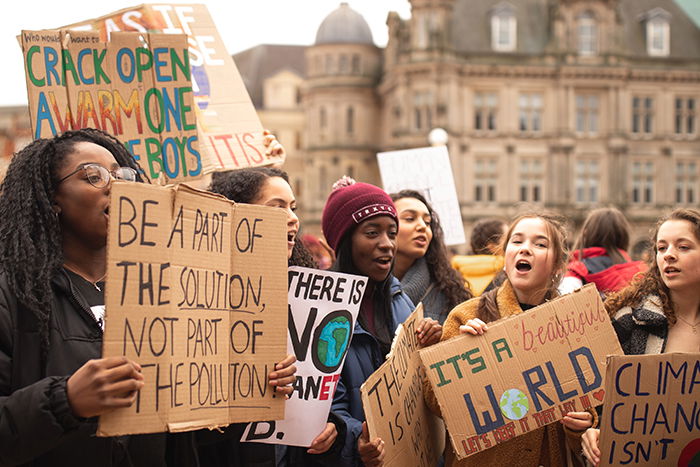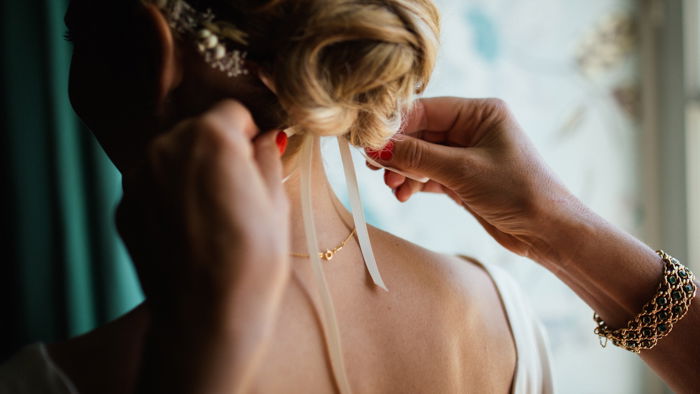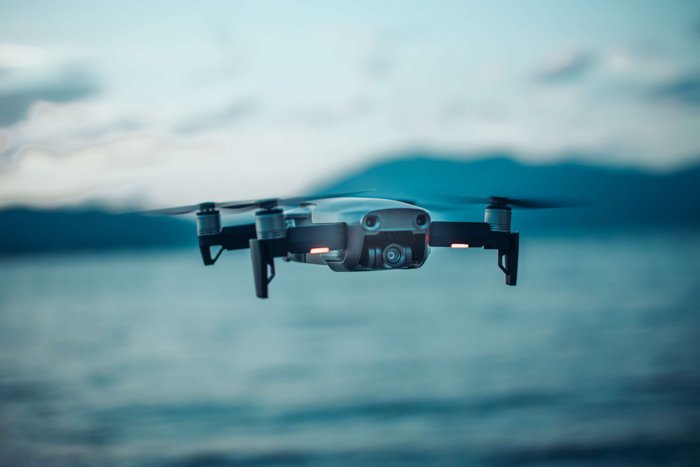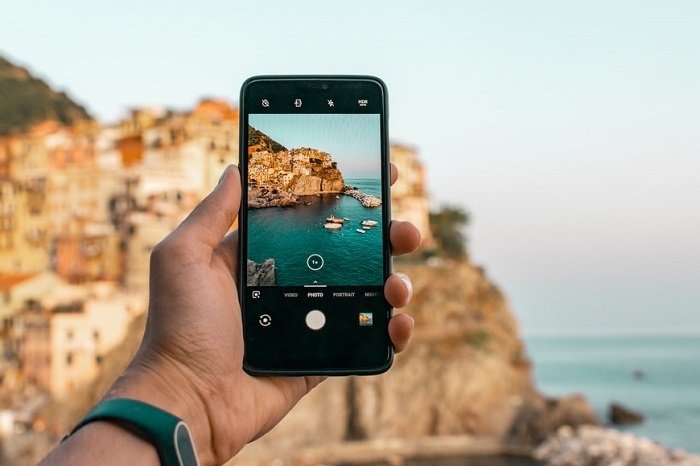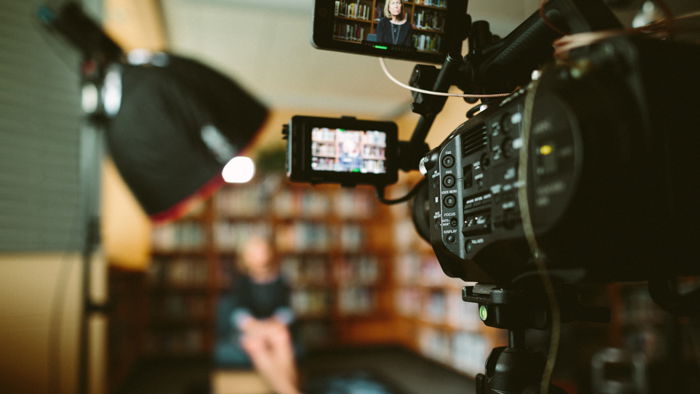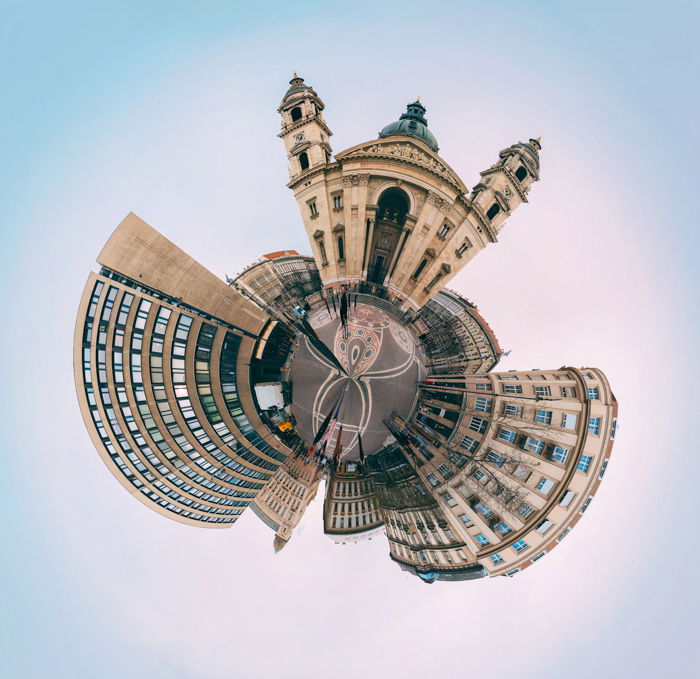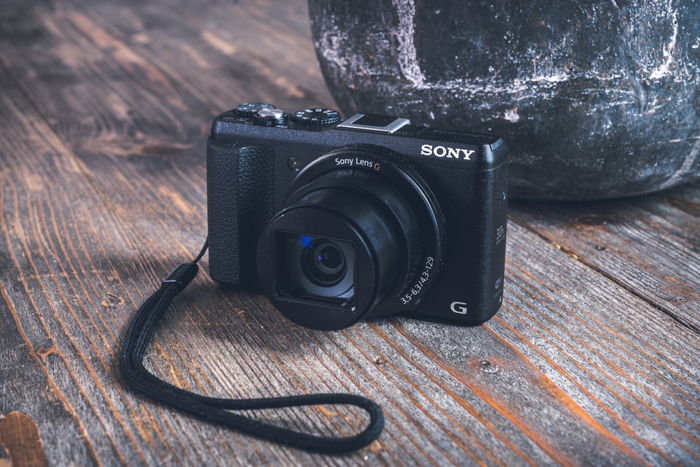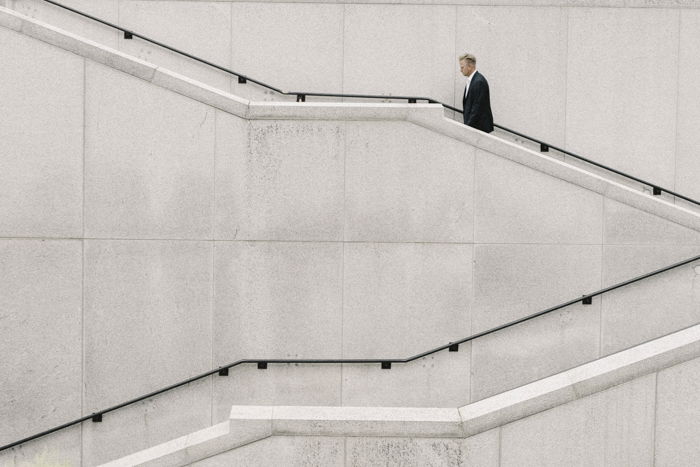Whether it’s wedding shots, stock images, or product photography, clients are always looking for something new. They aim to use images that others don’t have, as it makes their own products one-of-a-kind.
[ExpertPhotography is supported by readers. Product links on ExpertPhotography are referral links. If you use one of these and buy something, we make a little bit of money. Need more info? See how it all works here.]
The Hottest Photography Trends to be Aware
So what are the current photography trends? Here we have the top photography trends for 2023. Look out, world!
1. More Climate-Conscious Purchasing
Climate breakdown is becoming more and more unavoidable. We need to be conscious of what we buy and throw away. Everything we buy has a cost to our environment. And buying photography equipment is no different. We can reduce plastic waste by making thoughtful choices when buying photography gear. Rather than buy a low-quality kit at a discount, spend a bit more on better equipment. The cheap option will break within a year and end up in a landfill. The better option will be with you for years, reducing waste. You’ll see consumers continue to be greener over the next year and beyond. Photography manufacturers aren’t the biggest culprits. But they must become more climate-conscious as demands change.
2. Return of the Self Portrait
As the selfie came to dominate our social media news feeds, the credibility of the self-portrait took a severe knock. But some excellent self-portrait photographers are putting it back in the fight. They’re not taking selfies in the bathroom mirror. These photographers are re-establishing the self-portrait as a serious art form. Their pictures are stylized and involve a lot of consideration. They explore themes of self-exploration and geopolitics. It’s a trend that’s picking up pace. You can expect to see some wonderful self-portraiture over the coming year.
3. The Rise of AI
For many, artificial intelligence (AI) is the topic of science fiction. But the future is already upon us. We’re starting to see AI all over the place. And that includes the world of photography. For instance, we see AI technology in cameras. Elite cameras like the Sony a7R V use AI for more advanced autofocusing. AI technology is used for faster and more accurate subject tracking. They have face- and eye-recognition features. And they can predict a subject’s movement. They don’t just respond to it. Photo editing software is the other main place you’ll see artificial intelligence. Developers are using AI to simplify complex editing processes. With the help of AI, tedious and laborious tasks now have one-click solutions. Skylum has been a pioneer of AI photo editing for the last couple of years. And Luminar Neo is the best AI-powered software on the market. It uses AI to recommend presets for each photo you upload. But the headline features are its AI editing tools. You have AI powerline removal and AI sky replacement. Previously, these tasks were a pain in the rear. But now they’re a breeze with Luminar Neo. AI saves a photographer time, effort, and money. And it will continue to change photo editing for the foreseeable future.
4. Celebrate Age Diversity
Cultural diversity and body diversity have become important and relevant topics. Age diversity is no different. More and more people are starting to include people of all ages in the workplace. And this trend says that the elderly are relevant and important in the workplace. You can symbolize this by photographing people of all ages in various workplaces. Photograph older people with young people so that this photography trend is clear in your work. TIP: You don’t need to take photos in offices only. You can choose unconventional places, like skate parks. And take photos of different generations having fun together. You can experiment a lot with this photography trend.
5. Female Empowerment in Photography
Female empowerment focuses on women thriving in every industry they choose to pursue. It also highlights the importance of positive body image. Women of all ages, shapes, and sizes are worthy of being in photographs. You can document this in a variety of ways. You can focus on women representing the concept of a “girl boss.” You can photograph women working, playing sports, balancing family life, wearing bold clothes, or standing up for their rights. Peggy Shoots Film is a great photographer to follow if you want to celebrate your femininity. Her photography is bold, sexy, and fun. She takes a more-is-more approach. But the results are wonderfully camp and kitsch with a bit sprinkle of glam. Isabel Rovira is another outstanding female photographer. Her photography is closer to more traditional portrait and fashion photography. It’s more subtle and nuanced. But her female portraits are a statement of womanly elegance. TIP: You don’t have to take staged photos for this concept. You can treat it like a documentary where you arrange a time with women you know to photograph them as they work. You’ll get more authentic images this way.
6. Bold Self-Expression
Gone are days of broody facial expressions. This trend is all about expressing yourself unabashedly. Your model can shout, laugh, cry, etc., in front of your camera as much as they like. You can also take self-portraits in which you express something meaningful to you. Self-portraiture can be very therapeutic. In this case, it can also be a great way to attract new clients and earn money! You don’t need to express yourself through people all the time. You can tell a story through another genre, like still life photography. You can include parts of yourself in mirror reflections without showing your face. Or you can crop your pictures to show just your mouth. There’s no limit to what you can do with this. TIP: Instead of telling your model to look angry, give them a concept. Ask them to imagine that they’re in a specific scenario or that they’re a specific person. This will make it easier for them to give you the right emotions.
7. Self-Love
Mental health is a social issue we’re all familiar with. Self-love focuses on supporting mental health. A popular concept within this trend is relaxation and peace. You can take photos of people spending quality time with themselves. They should look relaxed and happy in their own company. This photography trend isn’t just about relaxation, though. Self-love can include body positivity, healthy relationships, and a healthy lifestyle. TIP: While there are exceptions, self-love tends to be associated with bright and dreamy pictures. Make sure your photos are well-lit and minimalistic to make your subjects look as joyful as possible.
8. The Return of Olympus and Fujifilm
Olympus and Fujifilm are two of the most recognizable names in photography. But just 12 months ago, it looked like both would leave the photography world. Neither were producing new models at any great speed. And there were rumors of breakup and fracture in the boardrooms. But 2023 has brought warmer tidings for Olympus and Fujifilm. Both companies have released new models. That’s a good sign on its own. But we’re delighted to see that both companies are making a statement of intent with their new models. Olympus released the OM System OM-1 at the end of 2022. The photography department has broken away from the main Olympus brand. And the OM-1 Micro Four Thirds camera demonstrates this new splinter company means business. And Fujifilm has released the X-T5. It’s the long-awaited sequel to the X-T4. And the new model takes APS-C mirrorless cameras to a new level. The sensor has an incredible 40.2 MP image resolution. That’s impressive even for a full frame camera. It features all the excellent Fujifilm functions you’d expect. So with the X-T5, Fujifilm is back in the game!
9. Create Dark and Moody Backgrounds
Dark backgrounds are often used in fine art photography to create an edgy but classic feel. They’re also popular in other photography genres, like still life, where they can make a subject look moodier. You’ve probably noticed them on many book covers and movie posters. The simplicity of a dark background can make a big difference in your work. It can turn a simple portrait into a thoughtful one. And it can transform a normal food photo into one that looks professional. TIP: You don’t need a professional backdrop or equipment. A piece of cardboard, a curtain, or even a large sheet of paper are great alternatives.
10. Capture Fighting for a Safe Future
Human rights have long been an important topic in the world. Now, they’re more relevant than ever. Human rights can involve politics, cultural changes, gender equality, etc. These are all issues that clients want to see in the photography industry more often. One of the most effective ways to capture this is to get involved. Join a march for women’s rights or document a day in the life of someone fighting animal abuse. In short, try to find a way to capture people fighting for a safer future. TIP: Embrace a candid approach for this. Don’t take photos as a photographer but as someone genuinely interested in the issue.
11. Embrace Vibrant Colors
Strong, bright colors are what we expect to see in the future. We believe this is to grab attention from the hundreds of thousands of images taken and shared daily. The stronger the color, the louder it shouts. And it needs to if it wants to get noticed. This is a little conflicting, as photographers often aim for natural scenes. Graffiti, wall paintings, and other outdoor designs are becoming trendy and louder to stand out. TIP: Try and be as natural as possible to keep the attention from going off the edge.
12. Vertical Is the Way
It’s hard to imagine that the orientation of images can be a trend. We say that, but expect a photography trend of more vertical photos. Horizontal images had their place for landscapes and vertical for portraits. Here, you capture the flow of the scene or subject. It’s definitely due to smartphones. Each image you capture is automatically vertical unless you turn it sideways. This is a big change from DSLRs, SLRs, and mirrorless systems in their initial horizontal position. TIP: Try capturing your images from a DSLR or mirrorless camera in a vertical orientation. Find scenes that fit it, not vice-versa.
13. Relaxed Wedding Photography
Wedding photography used to be a very formal act. Everyone posed perfectly, stiff as you like. Nowadays, with more and more couples getting hitched on the fly, wedding photography has followed suit. We know that wedding photography is an expensive venture. A photographer or team is responsible for capturing one of the most important days of your life. As it is such a big expense, we turn to self-capturing ideas, such as Instax cameras and a guest book. And I wouldn’t be surprised if wedding photographers started using only instant photography devices. You get the look of an “off-the-cuff” shoot. But the images are professional and one-off. It means you can still have a little control over the images being shared. TIP: Look at a wedding as a documentary project and less like a portraiture session.
14. More Drone Activity
I won’t drone on! But I will say this. As drones become cheaper and better, more photographers will use them. There are strict rules on where you can fly a drone, and rightly so. But as travel, we can use this aerial photography method to capture more and more. The quality of images has become outstanding and helps create great content. Photography trends like drone wedding photography will grow. And drone cameras will find their way into many other areas we didn’t expect. TIP: Check where and where you can’t fly beforehand. And use a filter for those well-lit situations.
15. Serious Smartphone Photography
Smartphone technology moves at lightning speed, and the camera is one of the main areas of improvement. Gone are the days of pixelated, blocky photos from a phone camera. Now we’re close to editorial-quality images. As technology improves, smartphones are becoming a tool for serious photography. Many artists are now using smartphones as their primary cameras. They don’t need to fork out for the latest mirrorless model. They have everything they need in their pocket! As smartphone cameras have improved, more AI-powered camera apps have hit the market. You see more smartphone photographers. And it’s not just snaps of family and friends. You see everything from portraits to minimalist architecture photography.
16. Try Capturing Images from Videos
Photography is a great medium to work with. You can capture almost any scene, well-lit or otherwise, with any digital camera. As we have better and better sensor resolutions, photographers are free to film more and more. You can pull still images from videos, whereas you can’t do the opposite. And these images are still of great quality. Filming a scene gives you the best of both worlds, ensuring you don’t miss anything. There are many plus sides to this process. For one, you can make money from both the stock video and image. Secondly, each second of the video gives you either 30 or 60 frames to choose from. It depends on your capture settings. TIP: Get into the habit of filming scenes with a tripod. For post-processing, use software such as Adobe Premiere Pro or Photoshop.
17. 360 Photography Trend
360-degree photography is going to be a big photography trend again this year. This type of photography gained a foothold in product photography, where the subject would turn as the camera captured. Photographers are changing how we shoot by turning the camera 360 degrees to capture the world around it. Timelapse photography is something that benefits from this process. But it is also great for real estate photography. With this setup, you can capture a 360-degree scene of a room, where the viewer can move around it as if they were there. It helps bridge the gap between photography and reality. There is huge potential for panoramic landscape photography or real estate photography. On top of that, you can create tiny globe images, which, when done correctly, look great. TIP: Maybe you don’t have the capital to invest in an expensive 360 camera. You can recreate the same technique using a tripod with a special 360-degree head, like the Vanguard Alta Pro. Or you can transform panoramas with Photoshop.
18. Cloud Storage
As technology advances, cameras gain better and better resolution. Higher resolution means bigger file sizes are needed to hold more information taken from the scenes you capture If you’re shooting RAW, the Canon 5D Mark IV averages 40 MB a shot. With increased file sizes comes an even greater need for storage. And this storage needs to be mobile, as many travel and work on the road. So hello, cloud storage. The cloud is a way to store and move your images around wirelessly. Many companies, such as Google and Apple, have cloud storage services. And they all have a small amount of space for free, expandable for a cost. The great thing about this type of storage is you can access your images anywhere. You need a connection to the internet, but if you have one, you can edit your images on the go. TIP: You can set up your mobile phone and Google Photos to automatically save your images to an external hard drive.
19. Film, Film, Film
We keep saying this, but film photography trends are growing. You might not believe so, as we constantly see manufacturers dropping their film-based products. Film photography is still very strong among professionals and enthusiasts alike. Not every photographer wants to see their images enhanced with filters on Instagram. Working with film lets photographers discover the base of this visual world. On top of that, you have a physical, tangible object after capturing your session. There are many benefits of working with film. Medium and larger film formats hold more play and resolution than some digital cameras. And it is also fun to use. Whereas digital photography doesn’t offer you the same feeling.
20. Edit Your Film Photos
Many film purists say you should never edit your film photos. They say you should do all the work in-camera. And editing your photos takes away the purity and essence of film photography. But in 2023, some film photographers are changing their minds. More and more voices in the film community are admitting they edit their photos with software. We’re not talking about wholesale changes. But they are using software for touch-ups and enhancements. This may seem like a contradiction to the analog photography philosophy. But there is some logic to it. Film photos need to be developed. Then the negative is printed or scanned. All these processes affect the final image. And unless you do all these things yourself, they’re out of your control. So editing the photos puts the control back in your hands. You can re-add the vitality that may have been lost in the printing process. Some photographers also need to be pragmatic. If you’re working for a client, you need to deliver what’s best for them. That means you might need to shelve your purist ideals. You can still shoot film. But using software to enhance your work might give you more pleasing results. And that means more money for the photographer. Capture One is a fantastic editing software for film photos. It has an excellent array of editing tools. And you can make subtle changes without ruining the film photo aesthetic.
21. Lose the DSLR
We have entered a new era of photography. Camera manufacturers have started to pour their resources into new types of devices. The recent change has been towards digital mirrorless cameras. These systems are smaller, quieter, and lighter while retaining great resolution. The Sony a7R IV full frame mirrorless camera gives you a 61 MP resolution, with 10 fps. This is better and faster than most DSLRs on the market. So why carry around the extra weight? As more and more photographers travel from place to place, a camera like this comes in handy. A mirrorless camera presents no noise for events where noise can be distracting. Does this mean that the DSLR is dead? No. There are still some excellent DSLR cameras available. But it does mean the days of the DSLR are numbered. Canon and Nikon are the main DSLR camera brands. But both are now focusing on developing mirrorless models. There is Pentax, a DSLR specialist. But they don’t produce many cameras. TIP: Don’t throw away your DSLR just yet. They are still favored by photographers of all levels. They are reliable workhorses. And they still produce excellent results. You can also find DSLR cameras for video production.
22. Embrace Minimalism
Every year, we look at our images and evaluate them through a magnifying glass. Complexity has always been used in photography. Photographers use so many different techniques on top of composition and color management. With the overuse of filters, photographers who want to be taken seriously should take a step back. They should look for something that makes their image different—a more minimalist approach. Less “noise” means more focus on the subject. This goes for portrait photography, fashion, landscape photography, etc. The more stripped down you can make your images, the better. TIP: When approaching a scene, look at what you can remove. Depending on your composition, you can wait for elements to move (in street photography, for example). Or aim for simpler backgrounds.
Conclusion
The future is impossible for anyone to see. But that doesn’t mean we can’t make our predictions for the hottest photography trends this year. Some trends have been growing for some time and will continue to grow in the next 12 months. But others are brand new. Whether we’re right or wrong, this will be an exciting year for photographers and photography!
